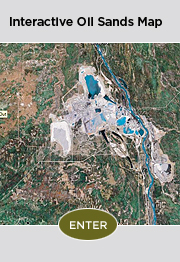Oil Sands Technologies
Technological Advancement a Key to Oil Sands Development
In 1778, fur trader Peter Pond was the first European to see the Athabasca oil sands. Ten years later, explorer Alexander Mackenzie encountered naturally occurring bitumen alongside and seeping into the Athabasca River. In the 1800s, Aboriginal peoples of the Fort McMurray area were observed using bitumen in combination with spruce gum for a number of practical applications, including dressing wounds and waterproofing canoes.
For most of the next 200 years, scientists would seek the most cost effective way to separate the bitumen from the sand and water. That quest continues today.
In 1915, Sidney Ells, an engineer with the Canadian Department of Mines, was the first to suggest using hot water to separate bitumen from the sand and water. In 1925, Karl Clark with the Alberta Research Council was the first to successfully demonstrate a method of separating the oil from the surrounding sand and clay using hot water and caustic soda, a technique still employed by mining operations today.




















